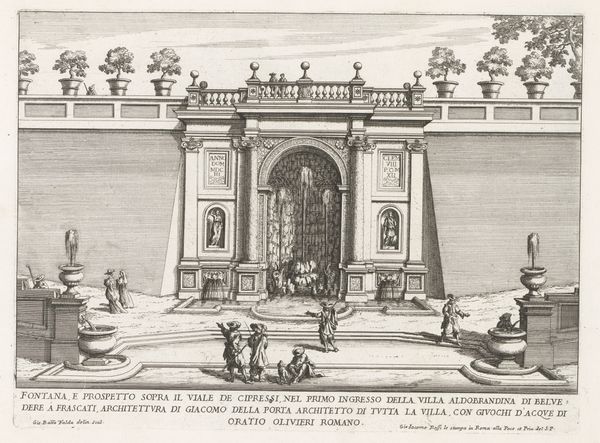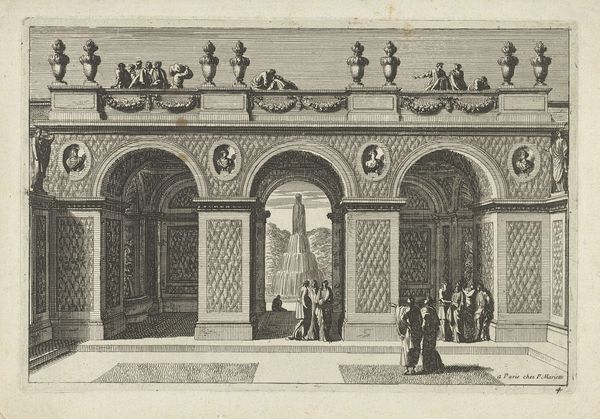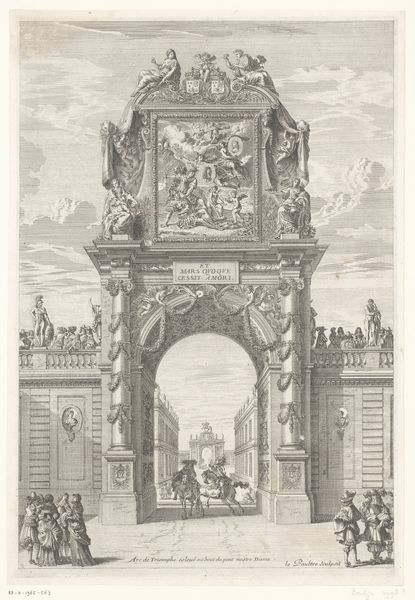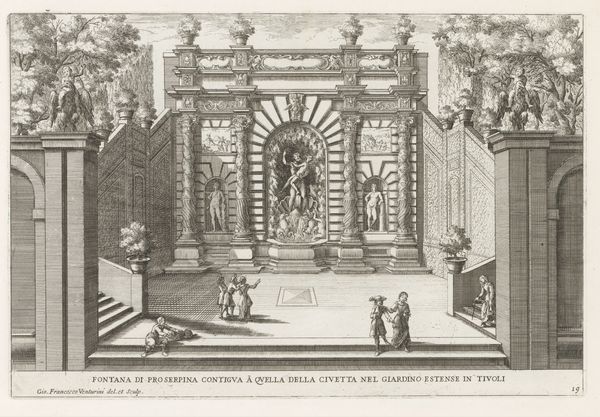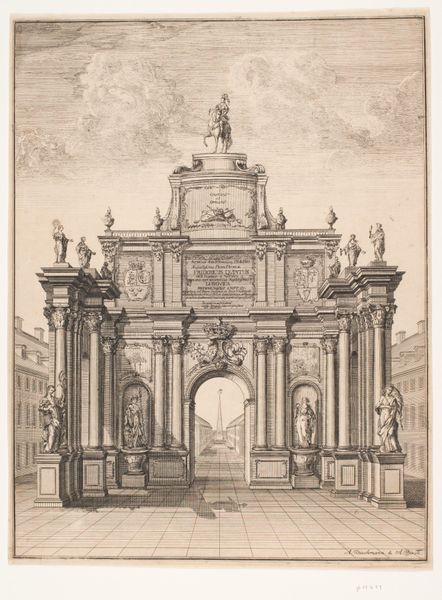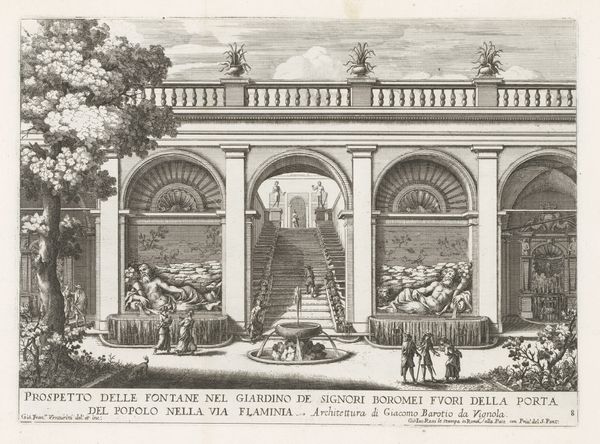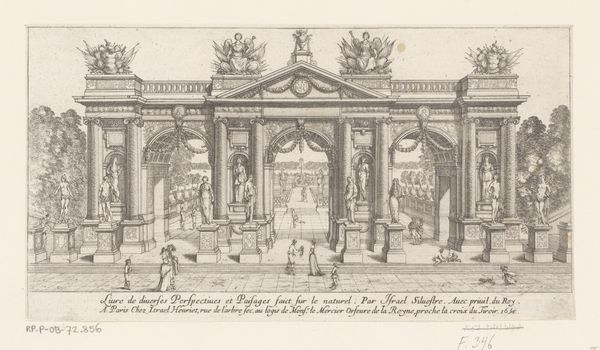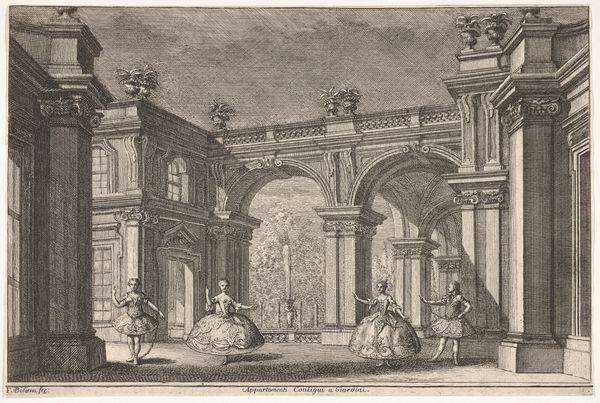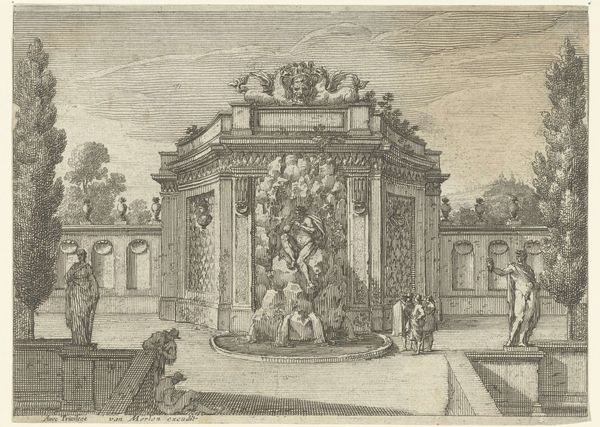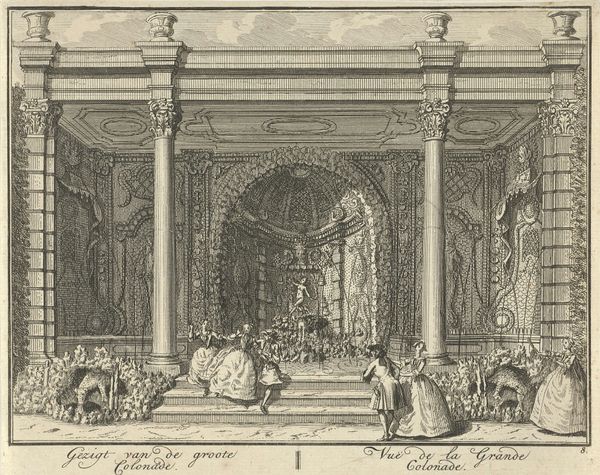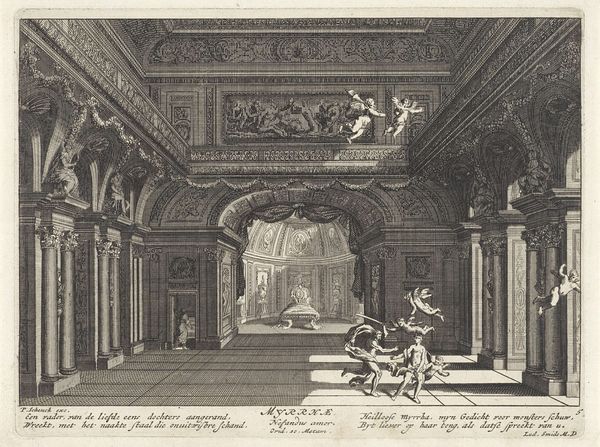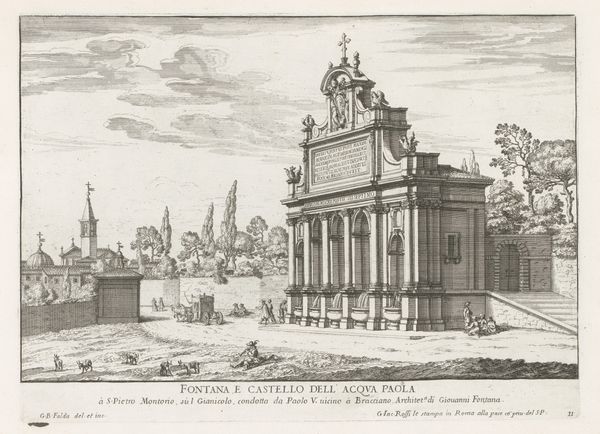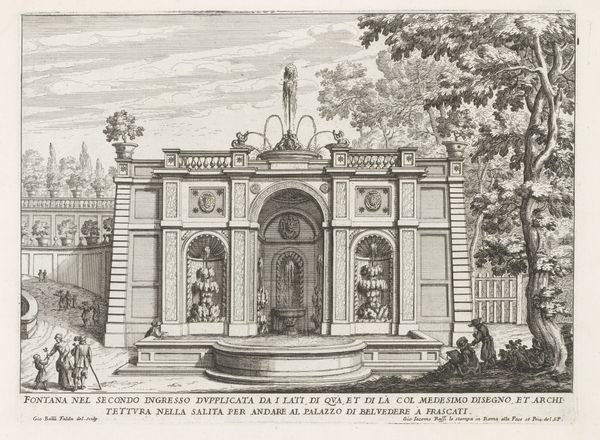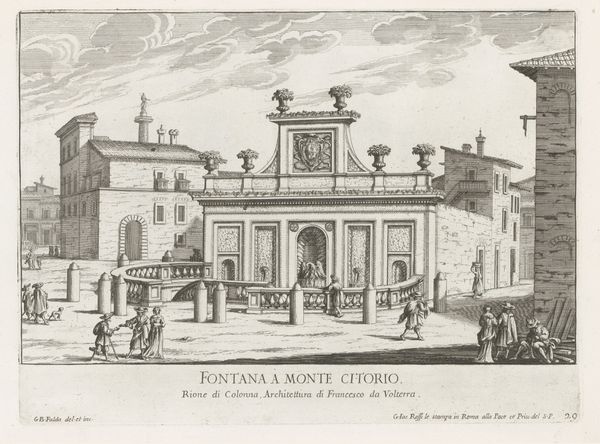
Fontein van de Uil in de tuinen van de Villa d'Este te Tivoli 1653 - 1691
0:00
0:00
print, etching, engraving, architecture
#
garden
#
baroque
# print
#
etching
#
old engraving style
#
landscape
#
engraving
#
architecture
Dimensions: height 219 mm, width 330 mm
Copyright: Rijks Museum: Open Domain
Editor: This engraving, titled "Fountain of the Owl in the gardens of the Villa d'Este in Tivoli" created between 1653 and 1691 by Giovanni Francesco Venturini, has an incredible sense of depth. The artist really captured the scale of the gardens and the way people interacted with the space. What do you see when you look at this print? Curator: This work isn't just a pretty picture of a garden; it’s a document reflecting power and social dynamics of the Baroque era. The Villa d'Este was a statement of Cardinal Ippolito II d'Este's wealth and influence. Think about it: controlling water, an essential resource, and displaying it so lavishly, speaks volumes. Editor: So the garden itself is a political statement? Curator: Absolutely. These elaborate fountains weren't merely decorative; they were a display of dominance over nature and a demonstration of the Cardinal's ability to command resources. Consider how gardens, historically, were spaces of leisure for the elite, implicitly excluding those who lacked the means to access or maintain such spaces. What do you observe about the people in the engraving? Editor: They seem to be playing, almost unaware of the… political undertones? Curator: Exactly. This is where it gets interesting. Are they genuinely carefree, or are they performing leisure? Is their joy complicit in upholding a system of inequality? The print makes us consider who gets to experience beauty and pleasure, and at what cost. Editor: That's a lot to unpack from what seems like a simple garden scene. Curator: Indeed. Venturini's print serves as a crucial reminder that art is never neutral. It always reflects and reinforces power structures, whether consciously or unconsciously. Thinking critically about these structures is so essential. Editor: This has totally shifted how I’ll view landscapes from now on! Thanks.
Comments
No comments
Be the first to comment and join the conversation on the ultimate creative platform.
